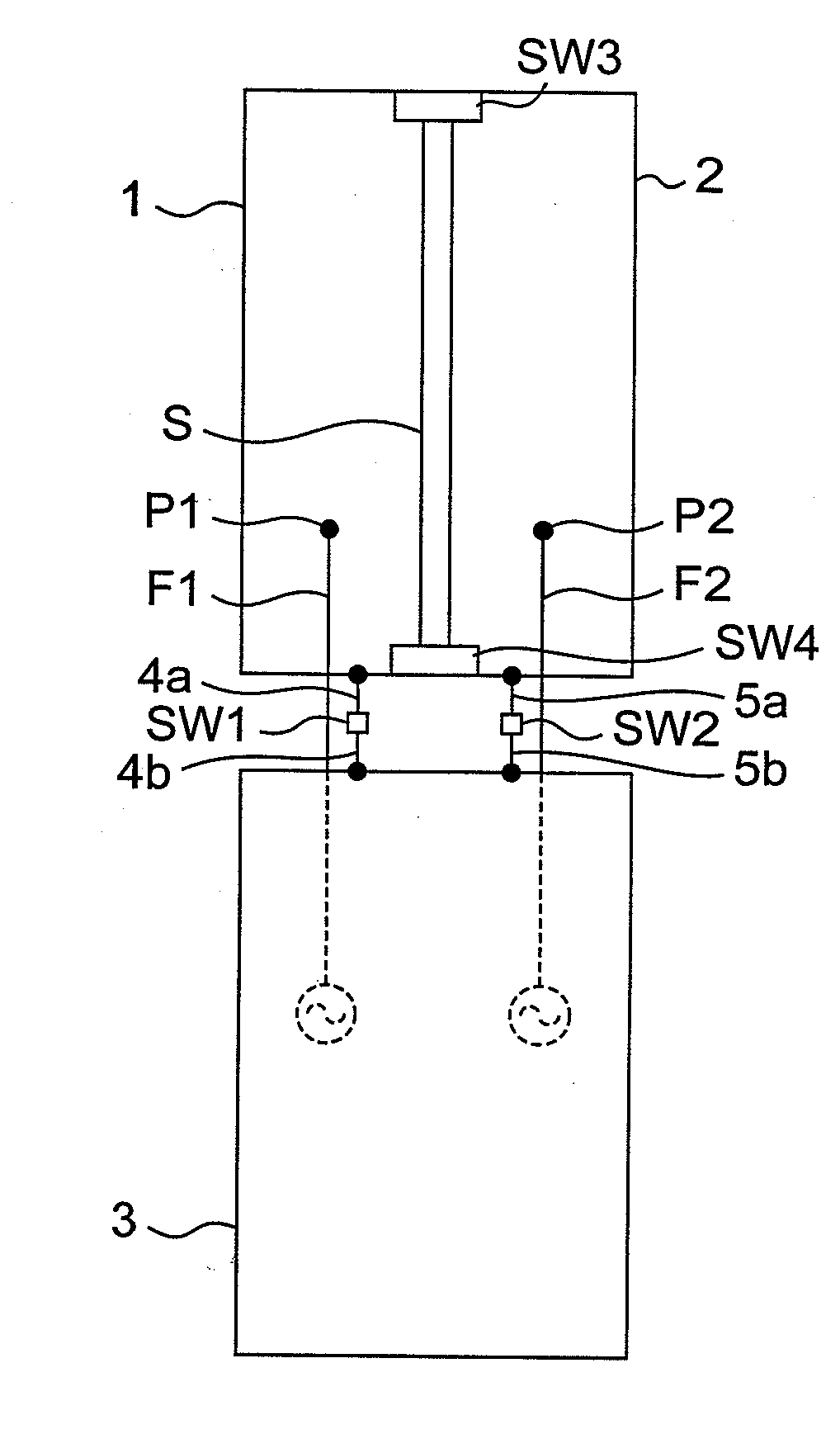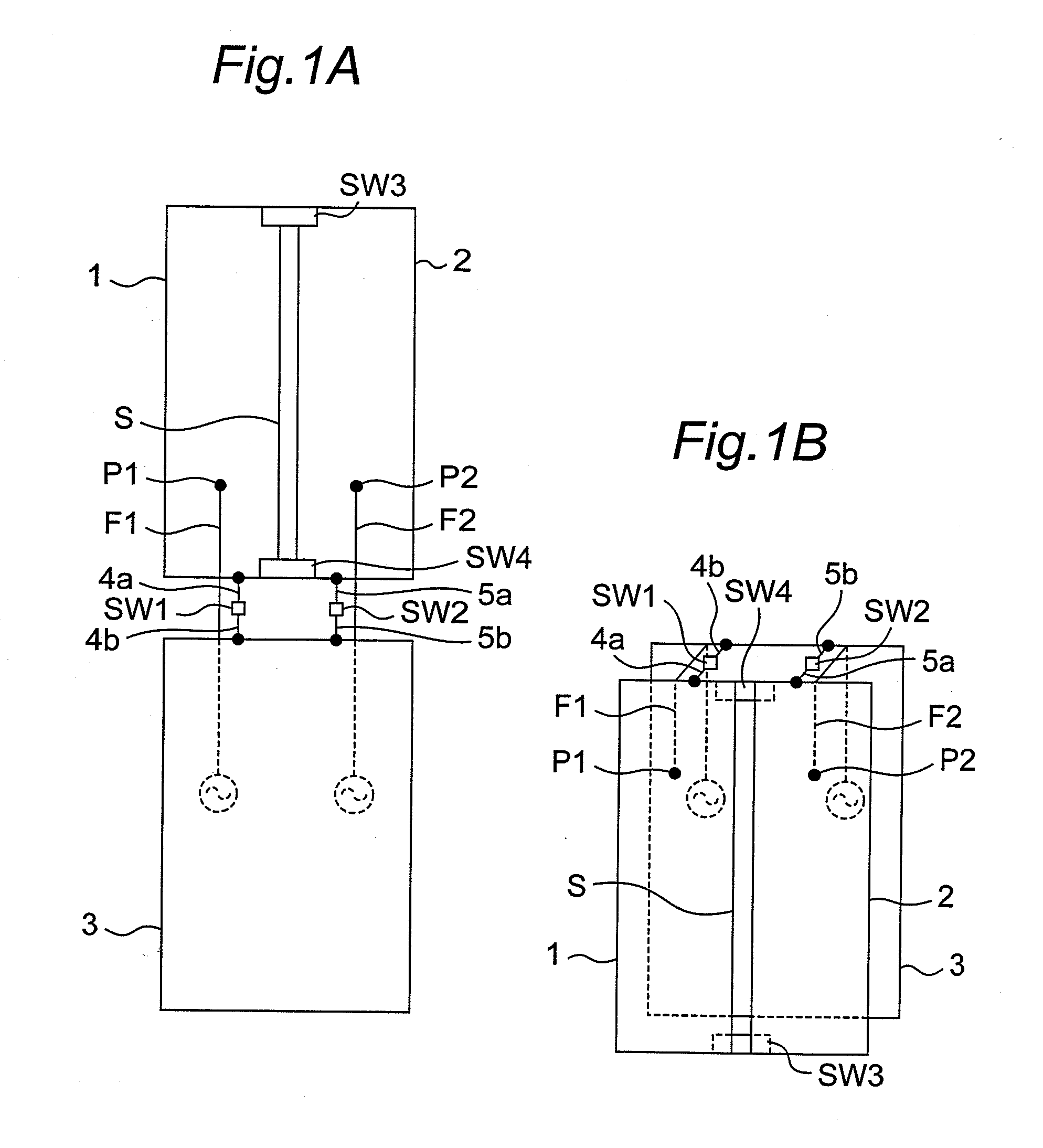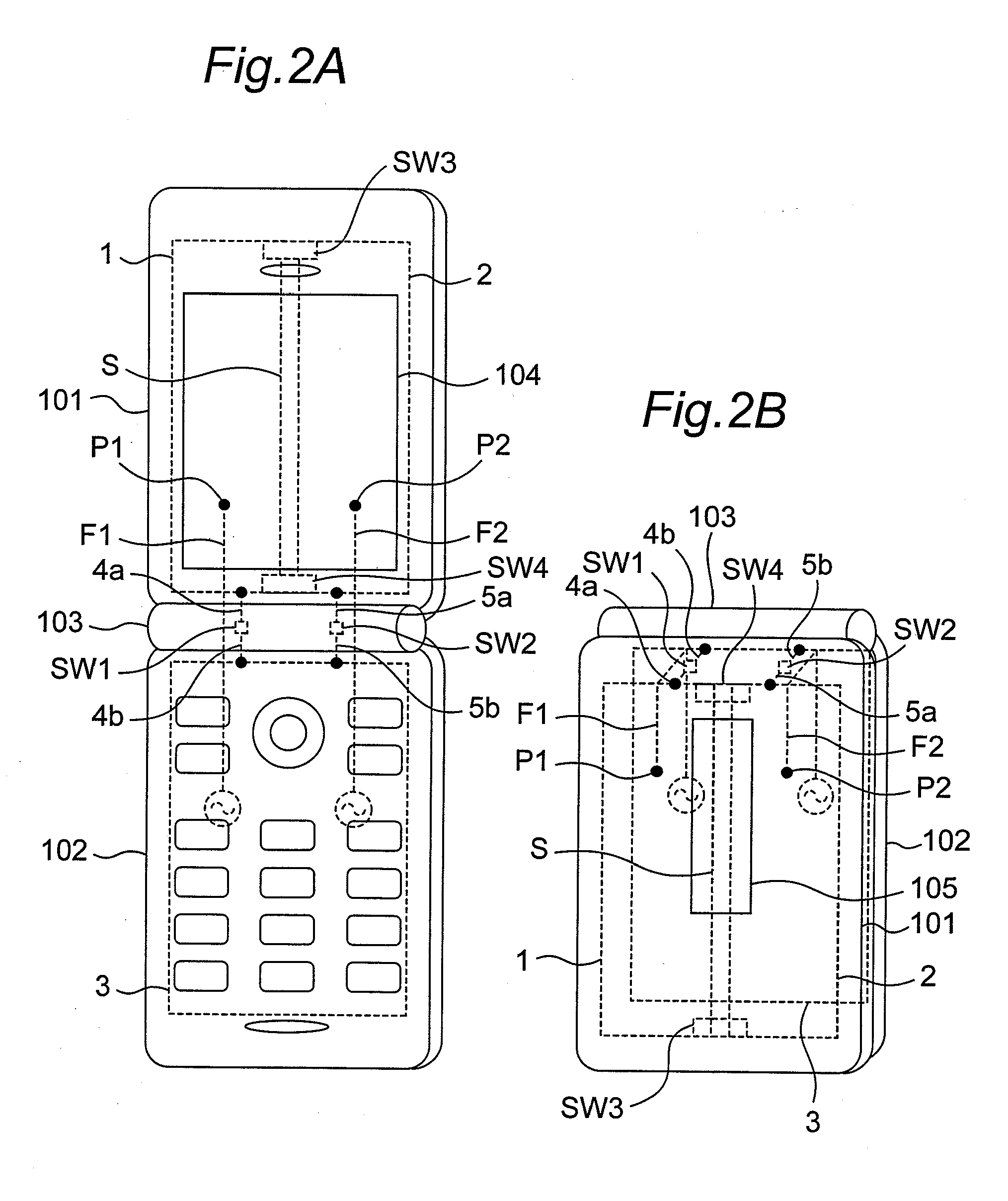Wireless communication apparatus with housing changing between open and closed states
a communication apparatus and open state technology, applied in the field of wireless communication apparatus, can solve the problems of difficult to reserve a space to be provided with antenna elements in a mobile phone, and the inability of antenna elements and ground conductors to operate as dipole antennas
- Summary
- Abstract
- Description
- Claims
- Application Information
AI Technical Summary
Benefits of technology
Problems solved by technology
Method used
Image
Examples
first preferred embodiment
[0076]FIG. 1A is a schematic diagram showing an antenna apparatus in its open state, according to a first preferred embodiment of the present invention. FIG. 1B is a schematic diagram showing the antenna apparatus of FIG. 1A in its closed state. FIGS. 2A, 2B, 3A, and 3B are schematic diagrams showing an implementation of a mobile phone provided with the antenna apparatus of FIGS. 1A and 1B. FIGS. 4 and 5 are block diagrams showing a circuit configuration of the antenna apparatus of FIGS. 1A and 1B.
[0077]Referring to FIG. 1A, the antenna apparatus includes two antenna elements 1 and 2, each made of a conducting plate having at least one linear edge. The antenna elements 1 and 2 are opposed to each other at respective one edges thereof so as to be close to each other, thus resulting in a parasitic slit S formed between the antenna elements 1 and 2. As shown in FIGS. 2A and 2B, the parasitic slit S is provided in parallel to a longitudinal direction of a mobile phone (i.e., an up-down ...
second preferred embodiment
[0108]FIG. 20A is a schematic diagram showing an antenna apparatus in its open state, according to a second preferred embodiment of the present invention. FIG. 20B is a schematic diagram showing the antenna apparatus in FIG. 20A in its closed state. FIGS. 21A to 23B are schematic diagrams showing an implementation of a mobile phone provided with the antenna apparatus of FIGS. 20A and 20B. FIGS. 24 and 25 are block diagrams showing a circuit configuration of the antenna apparatus of FIGS. 20 and 20B. The antenna apparatus according to the present preferred embodiment is characterized by being opened and closed by rotation, in a manner similar to as that of the conventional mobile phone described with reference to FIG. 27, instead of being opened and closed in a two-fold similar to that of the antenna apparatus according to the first preferred embodiment.
[0109]Referring to FIG. 20A, antenna elements 1 and 2 made of conducting plates are provided in a first plane, and a ground conducto...
PUM
 Login to View More
Login to View More Abstract
Description
Claims
Application Information
 Login to View More
Login to View More - R&D
- Intellectual Property
- Life Sciences
- Materials
- Tech Scout
- Unparalleled Data Quality
- Higher Quality Content
- 60% Fewer Hallucinations
Browse by: Latest US Patents, China's latest patents, Technical Efficacy Thesaurus, Application Domain, Technology Topic, Popular Technical Reports.
© 2025 PatSnap. All rights reserved.Legal|Privacy policy|Modern Slavery Act Transparency Statement|Sitemap|About US| Contact US: help@patsnap.com



